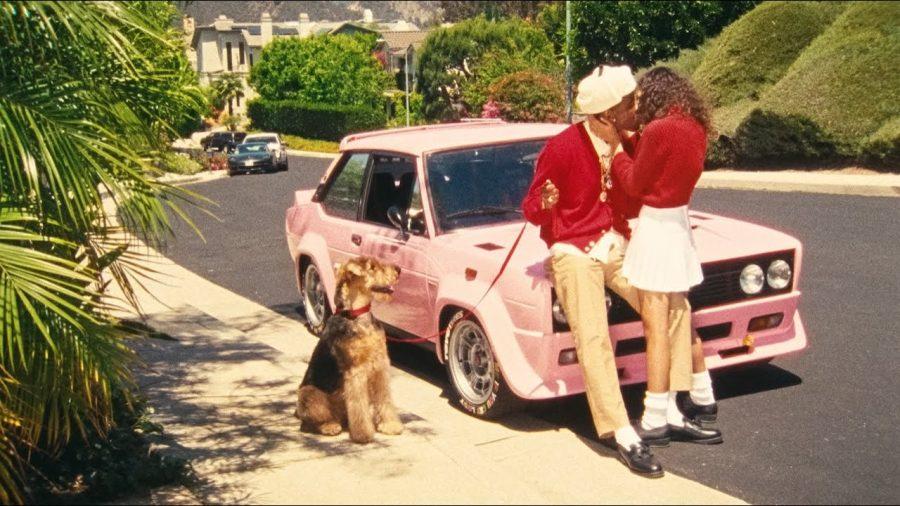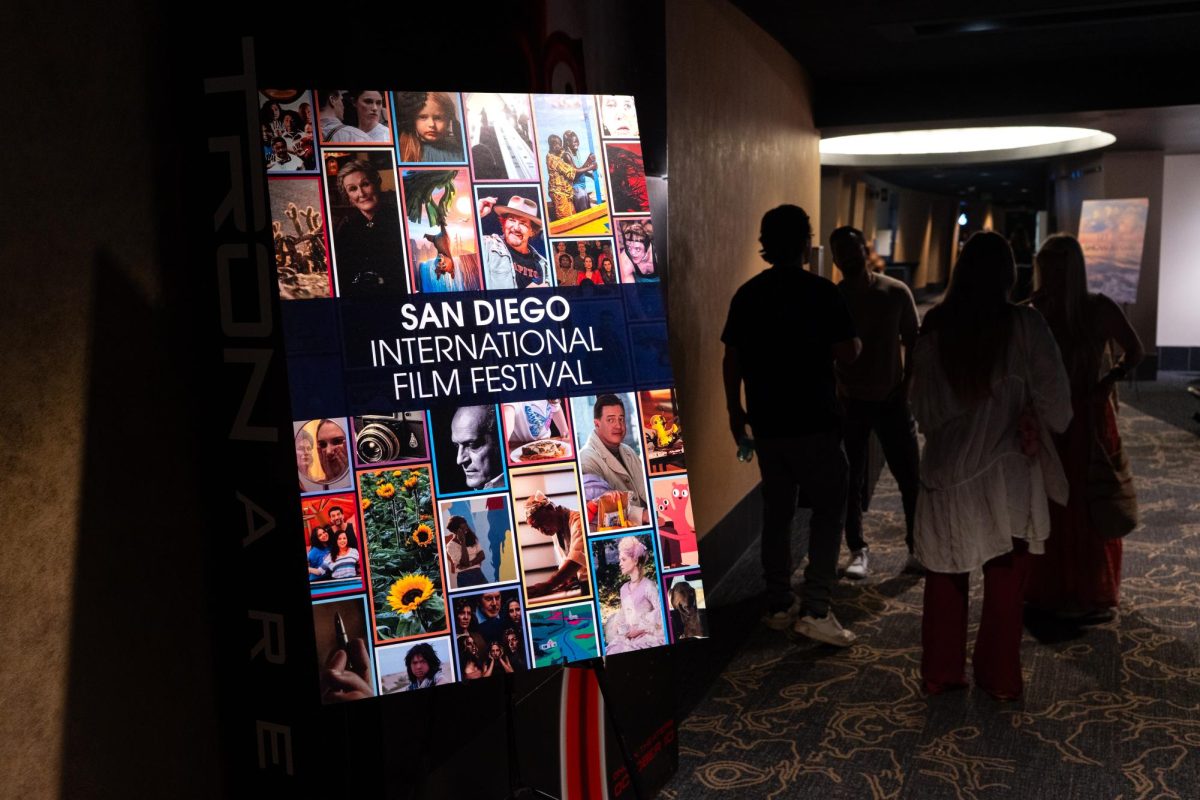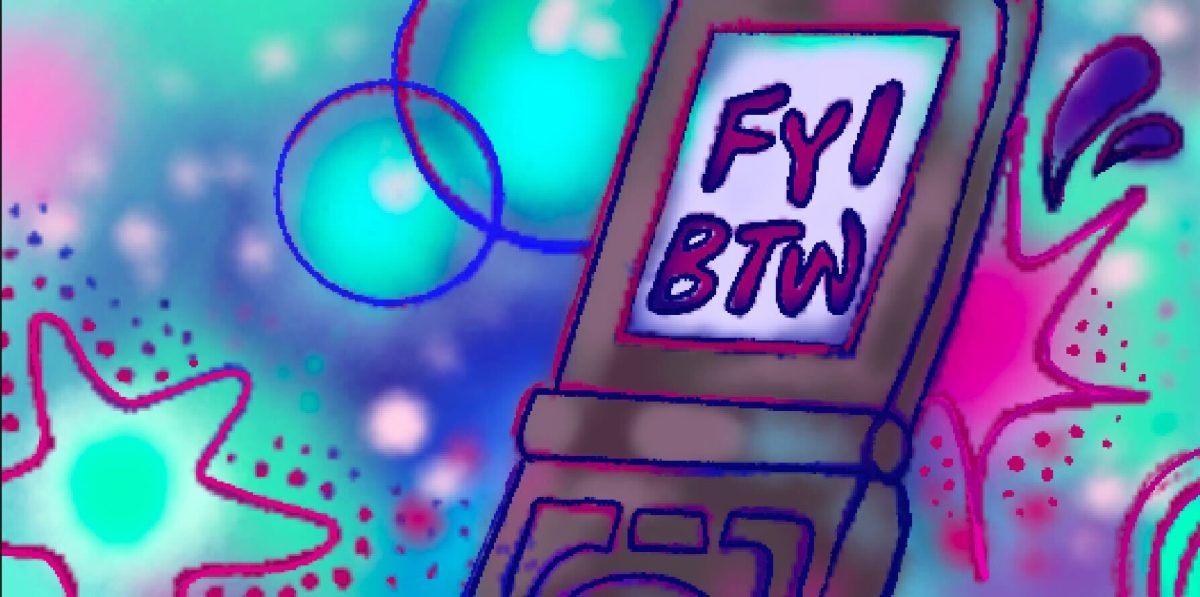As fall quarter once again looms menacingly over the horizon, our writers at A&E reflect back on the content that helped them usher in the new post-vaccine summer. Check out the stories, movies, and albums that comforted us through all of the uncertainty and accompanied us as we stepped out into the world once again.
“Demon Slayer: Kimetsu no Yaiba the Movie: Mugen Train”

While “Demon Slayer: Kimestu no Yaiba the Movie: Mugen Train” was released in the U.S. in April of this year, it was the first movie I watched in theater since the start of the pandemic, making it my summer hit. During the pandemic, I began to watch more anime and I was awestruck by the “Demon Slayer” series during my first watch-through. I really enjoyed most of the characters and their design, but most importantly the animation style, and I feel like all these elements that made the series great were present in the film.
First, the characters. In the series, I found Zenitsu unbearable. I disliked how annoying he could get, being not only the loudest character, but also the most cowardly. However, the more I watched the film, the more I weirdly enjoyed him. Although he was still wimpy at times, it felt a lot more toned-down than before, and I would be lying if I said the train scene where he saves Nezuko wasn’t one of the coolest scenes in the movie, demonstrating just how powerful he could be. In addition to Zenitsu, I really enjoyed the main villain Enmu, especially how he used his power to manipulate the dreams of his victims. Part of what makes Enmu’s ability so interesting is that the only way for a character to break out of the ability is to commit suicide in the dream. This caveat leads characters to eventually forget what world they are in and almost kill themselves in the real world as they repeatedly commit suicide in order to stay in battle againt Enmu, providing for high-intensity action scenes.
“Demon Slayer”as a whole does an amazing job in combining CGI and regular animation. It’s done so well that it simply feels natural and it’s amazing to look at. However, there were some points in the movie where the CGI didn’t feel the same as the rest of the movie or even the series. Enmu’s abilities allow him to cover the train, the main setting of the movie, with tentacle-like arms, which were animated with CGI. The CGI for the arms felt really out of place at times; during my first watch-through in theaters, I remember thinking that the arms look like they were modeled using PlayStation 3 graphics from the late 2000s. Despite the weird CGI for Enmu’s ability, the rest of the animation in the film was jaw-dropping, especially the scenes where characters like Tanjiro, Zenitsu, and Rengoku have their breathing techniques — water, thunder, and flame, respectively — represented visually by having the element present throughout the slashing motion of their sword. Simply put, it’s art.
As a whole, the “Demon Slayer” movie was one of the highlights of my summer, and I was glad it was the first movie I saw back in theaters.
— Hector Arrieta, Senior Staff Writer
“The Green Knight”

Despite the banality of this year’s summer blockbusters (see “Space Jam: A New Legacy,” “F9,” and “The Kissing Booth 3”), indie powerhouse A24’s newest fantasy film “The Green Knight,” presents a refreshing rendering of a classic Arthurian tale. Based on the Middle English poem “Sir Gawain and the Green Knight” (translated by J.R.R. Tolkien), the film follows an unsure and reckless Gawain (Dev Patel) along his quest to confront the eponymous Green Knight — a gigantic tree-like creature who, after an unexpected holiday visit to King Arthur’s court, engages Gawain in a deathly exchange of blows. Despite the uncanny resemblance between Tolkien’s Ent tree spirits and director David Lowery’s Green Knight, the two epic, fantasy-inspired films hold little in common. “The Green Knight” is not a fitting alternative to the grandeur and eventfulness of Tolkien’s beloved trilogy, nor is it a universally-accepted interpretation of the original source text. Instead, Lowery, alongside a cast of charming Hollywood regulars (Alicia Vikander, Barry Keoghan), crafts an equally meditative and confounding film about Gawain’s coming of age. Much like the English landscape that the film depicts, the moral of Gawain’s tale in “The Green Knight” is foggy. Is Lowery mocking medieval England’s fascination with duty and obligation? Or is he reaffirming the relevance of chivalric values in the modern age? These questions, among a myriad of others surrounding the film’s ambiguous ending, are not easily answered. And while the film’s elusiveness strays from the inane box office formula, its baffling nature lends itself well to the myth surrounding Gawain, his infamous uncle King Arthur, and Gawain’s mystic quest for redemption.
— Sarah Delima, Staff Writer
“My Friend Cassidy Has a New Boyfriend”

As our reality shifts closer to the much memed-about “darkest timeline,” it’s comforting to consume media that’s somehow more absurd than our day-to-day lives. Enter Caroline Schaper’s bizarre, delightfully off-kilter short story, “My Friend Cassidy Has A New Boyfriend.” Published in the Columbia Journal this August, the piece follows a neurotic woman as she wrangles with feelings of jealousy, admiration, and confusion upon meeting her friend’s famous new beau. The boyfriend in question is the Pink Panther, the 1960s-era cartoon character associated with the film franchise of the same name starring famed British actor Peter Sellers. The obvious question is, how does a cartoon character appear in the real world, let alone date a presumably human woman? Schaper doesn’t answer, instead using the main character’s immediate acceptance of the situation as a way to convince the reader into accepting it, too. As the story progresses, the main character’s thoughts about the Pink Panther spiral into comical levels of irrationality, culminating in a satisfying moment when she reaches her breaking point. The story’s premise is admittedly ridiculous, but the authority and detail with which Schaper tells the tale prevent it from coming off as gimmicky or superficial. Schaper, who has written for late-night mainstays like “Full Frontal with Samantha Bee” and “The Late Show with David Letterman”, effortlessly walks the line between comedy and pathos. The humor of the story is grounded in relatable anxiety about meeting a friend’s SO and navigating the changed dynamic they create within the overall friend group. By exaggerating Cassidy’s new boyfriend to the extreme, Schaper is able to similarly exaggerate the mixed emotions that arise when Cassidy’s friends meet him. Behind the expected niceties and supportive comments are feelings of jealousy, judgment, and insecurity. As is the case with many great jokes, the main character’s reaction is funny because it’s recognizable. The scenario might be fictional, but the emotions ring true. This nuance, combined with the story’s stellar humor, makes “My Friend Cassidy Has A New Boyfriend” a comedic gem. Read it and enter a lighter timeline — at least, for a little while.
— Bailey Bujnosek, Staff Writer
“CALL ME IF YOU GET LOST”

After a year of being locked up, many of us were beginning to feel a little stir-crazy. Our homes quickly went from being a safe haven from the dangers of the pandemic to a space full of chaos and stress as work and leisure messily blended into a single space, denying us the luxuries of complete focus or relaxation. When vaccines finally became widely available, there was a glimmer of hope, a light at the end of the tunnel. We put on our best outfits and stepped out, our excitement bolstered by the mRNA pumping through our systems. Finally, freedom. Nothing could’ve embodied this time’s newfound freedom and reprieve better than Tyler, the Creator’s sixth studio album “CALL ME IF YOU GET LOST.” Brimming with horns and hopping from smooth jazz-rap tracks to gritty, blow-your-speakers-out bangers, this new record from the internet’s favorite provocateur was the perfect soundtrack for a post-quarantine summer. Name dropping exotic travel destinations like Geneva and Capri, Tyler boasts of his vacationesque lifestyle, flexing his luxurious car collection, while also weaving in a scandalous narrative about his adventures in homewrecking. With ad-libs from the legendary DJ Drama, this project truly feels like the convergence of the early and mid-2000s hip-hop that inspired Tyler and the present-day sounds inspiring the next generation. Features from hip-hop veterans like Lil Wayne and Pharrell as well as younger stars of the genre like Youngboy Never Broke Again and 42 Dugg further add to the project’s unique mixture of new and old. Standout tracks include the ‘90s-inspired “WUSYANAME,” the sly diss track “RISE,” and my personal favorite: “SWEET / I THOUGHT YOU WANTED TO DANCE,” whose latter half invokes images of an unrequited romance set in a Wes Anderson film. This project’s throughline message of freedom, of all kinds, made it the perfect travel companion as we stepped back out into the world, ready to rediscover the joys of summer picnics and leisurely beach days.
— Elias Roman, A&E Editor
Images courtesy of Call Me If You Get Lost, Jumpcut Online, The Daily Beast, Hyperpix, and Headline Planet.












